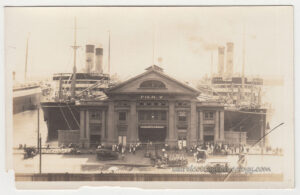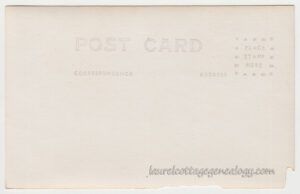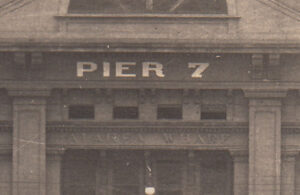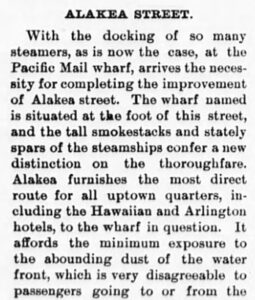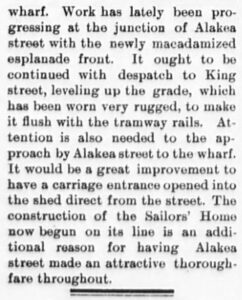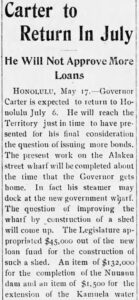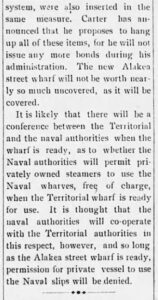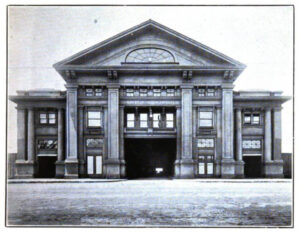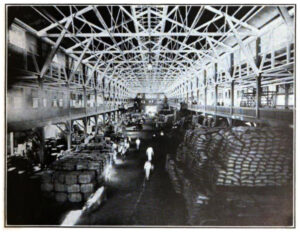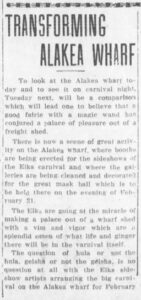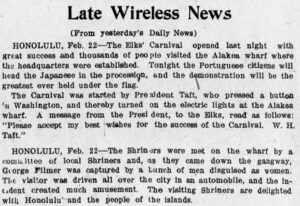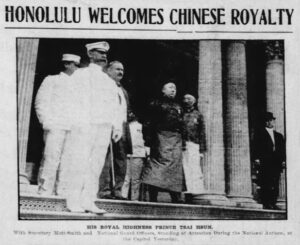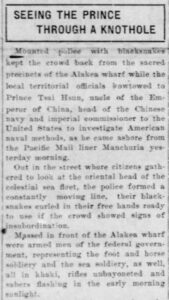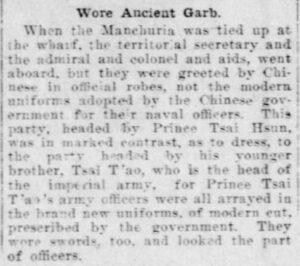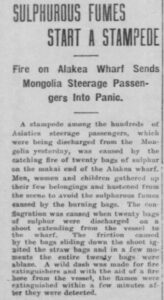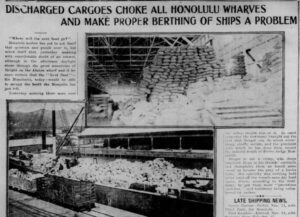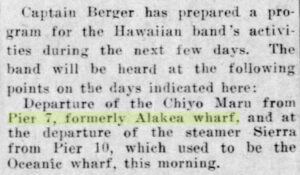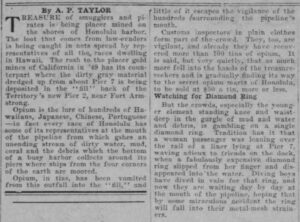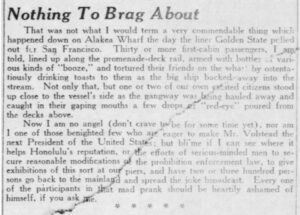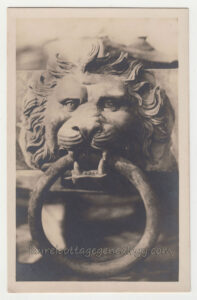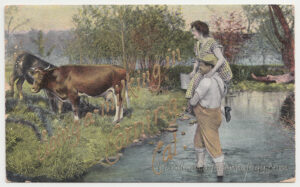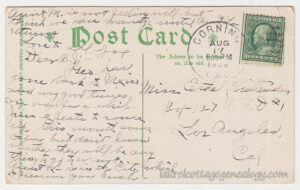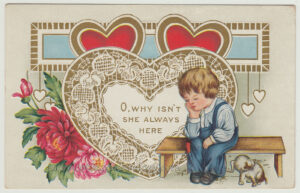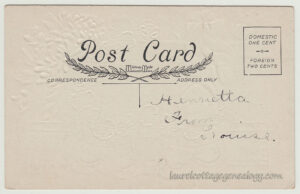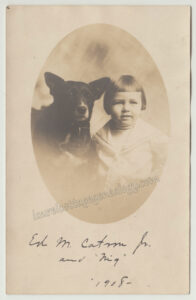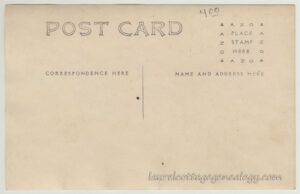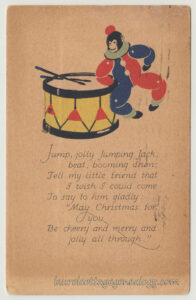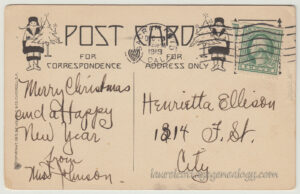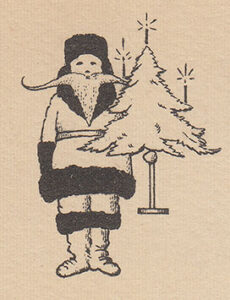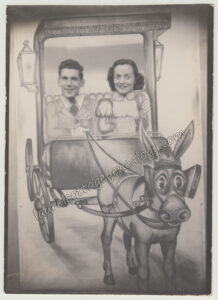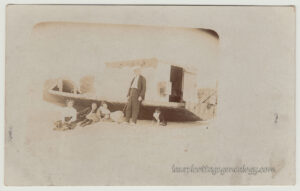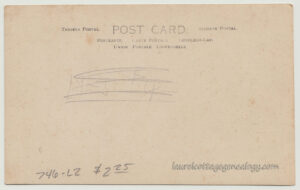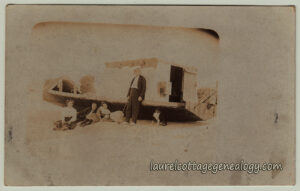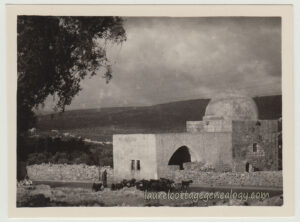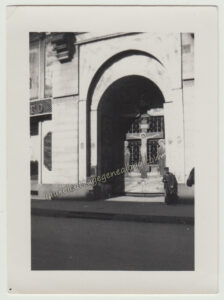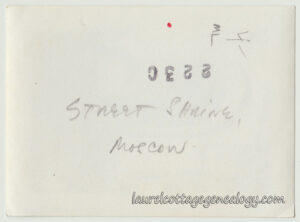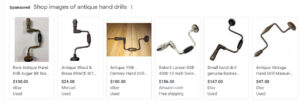Real Photo Postcard, unused. AKO stamp box. Circa 1924 – 1930. Photo image circa late 1910s.
Price: $15.00 (As is – note the pieces of the postcard missing from the left corner and bottom border.)
Two steamers (names unknown) flank Honolulu’s Pier 7 and a portion of a third is visible on our left.
A few thoughts…..
I keep thinking someone should write a book about the history of this particular wharf, or maybe better yet, about all of the Honolulu wharves. (Alas, that can’t be me.) It’s just that in researching old newspaper accounts and searching Google books, etc., I’m hit with that poignant feeling of something having been forgotten. So much to re-learn so-to-speak….thinking of how Hawaii was such a crossroads, a stopover for ships from all over the world…..Mention of the wharf shows up in thousands of articles, too many to delve into, but we’ll include some of them here that will tell part of the story. (And I don’t know how you’ll feel, but I’d like to time-travel back to that masquerade ball in 1910).
About our postcard:
The photo used for this card was definitely taken earlier than 1924: Another RPPC was found online of the same view that was postmarked 1921. That particular postcard had been mislabeled as the subject of a New York City pier. (Correction submitted August 2024.) It really goes to show how crucial it is to always look at the details, because when you click to enlarge the image, you’ll see the wording “Alakea Wharf” spelled out just a little below “Pier 7″……and Alakea Wharf was located in Honolulu, Hawaii:
Our postcard date estimate comes from the excellent Playle’s website, which identifies this particular AZO stamp box, (on the reverse) with its squares in each corner, as being from 1924 – 1949, however it’s probable that the card was produced in the 1920s. But, getting back to when the actual photo for the card was taken – I’d say mid-to-late 1910s, due to the look of the clothing styles. The car in the photo would be the best reference but it’s proving difficult to get a model and year for it since a crop of the vehicle is not very clear.
A little history from newspapers and books. Backtracking to 1893 – Alakea Street and the Pacific Mail Wharf:
Summer of 1907, Alakea Street Wharf completed
Alakea Wharf was named after its location, Alakea Street, which runs perpendicular to the waterfront. (It’s unclear whether it actually intersected.) From what we surmise from the article above, the Alakea Wharf appears to have replaced the Pacific Mail Wharf. Bidding for the new pier’s construction started in April 1906 and the work was completed around June or July of 1907:
Exterior and interior photo of the newly constructed wharf building, 1907 – from Governor Carter’s report for the fiscal year ending June 1907 (printed 1907). Note the lack of “Pier 7” signage:
Below, February 1910, when the Elks Club put on their carnival and masquerade ball:
September 1910, Prince Tsai Hsun arrives in Honolulu:
Heavy security at Alakea Wharf. Below, a couple of clips from a long account. The “knothole” referred to the press’ restrictions in attending a meeting that took place on board ship with officials and dignitaries.
August, 1912. Friction starts a fire:
November 1912, discharged cargo holding up ships:
Name change – Alakea Street Wharf becomes Pier 7 in 1914:
On January 6, 1914, the Board of Harbor Commissioners unanimously voted that each of the nineteen Honolulu wharves should be called by a number. (There were twenty if you count Piers 5 and 5a as two separate entities.) See Maritime Hawai’i’s web post in sources.
Opium tins and an elusive diamond ring in, “Placer Mining in Honolulu.” Below, a portion of the January 1921 write-up:
March, 1922. During Prohibition, drinkers on board ship were toasting those below stuck in “dry-dock.”
Pier 7 today, 1988 – 2024
Today, the structure that was the Alakea Wharf/Pier 7 as it appeared in our postcard is no longer there. Pier 7 exists, but certainly, (as one would expect over a century later) not in the same capacity. When was the original building renovated or replaced? The answer would be in newspaper accounts, but the more recent decades in Newspapers.com are restricted due to copyright legalities. (Access to those years costs extra per month and are out of my price range.)
From 1988 – 2009, Pier 7 housed the Hawaii Maritime Center.
Falls of Clyde docked at Pier 7:
For some decades (start date not found) Pier 7 has been home to the historic vessel, Falls of Clyde. Built in 1878, she’s iron-hulled, four-masted full-rigged and is the last of her kind. She was registered as a National Historic Landmark in 1989, but unfortunately had to be unregistered in 2024, due to condition issues. See the prior link (Wikipedia) and this 2023 KITV news article for her proposed fate.
Sources: “Real Photo Postcard Stamp Boxes. A-B. https://www.playle.com/realphoto/photoa.php (accessed July 19, 2024).
“Honolulu’ New Dock.” Hawaii Herald. April 6, 1906. Thursday, p. 6. (Newspapers.com).
“Carter to Return In July.” Hawaii Herald. May 23, 1907. Thursday, p. 3. (Newspapers.com).
“Late Wireless News.” Hawaii Herald. February 23, 1910. Wednesday, p. 6. (Newspapers.com).
“Alakea Wharf” and “Interior of Alakea Wharf Shed.” Report of the Governor of Hawaii to the Secretary of the Interior for the Fiscal Year Ended June 30 1907. Washington: Government Printing Office. (1907). Google.com/books.
“Prince Tsai Hsun Reaches America.” Honolulu Star-Advertiser. September 14, 1910. Wednesday, p. 1. (Newspapers.com).
“Sulphurous Fumes Start A Stampede.” Honolulu Star-Advertiser. August 28, 1912. Wednesday, p. 12. (Newspapers.com).
“Discharged Cargoes Choke All Honolulu Wharves And Make Proper Berthing Of Ships A Problem.” Honolulu Star-Advertiser. November 15, 1912. Friday, p. 16. (Newspapers.com).
“From Names to Numbers.” December 23, 2020. maritimehawaii.com. (Accessed August 1, 2024.)
“Captain Berger Will Have A Busy Week.” Honolulu Star-Advertiser. January 10, 1914. Saturday, p. 6. (Newspapers.com).
“Placer Mining in Honolulu.” Honolulu Star-Advertiser. January 28, 1921. Friday, p. 7. (Newspapers.com).
“Nothing to Brag About.” Honolulu Star-Advertiser. March 12, 1922. Sunday, p. 48. (Newspapers.com).
Hawaii Maritime Center. n.d. https://en.wikipedia.org/wiki/Hawaii_Maritime_Center (accessed August 19, 2024).
Falls of Clyde (ship). n.d. https://en.wikipedia.org/wiki/Falls_of_Clyde_(ship) (accessed August 17, 2024).
Drewes, Paul. (2023, June 28). “State wants Falls of Clyde to go, to revitalize Honolulu Harbor pier.” Island News, kitv.com.

